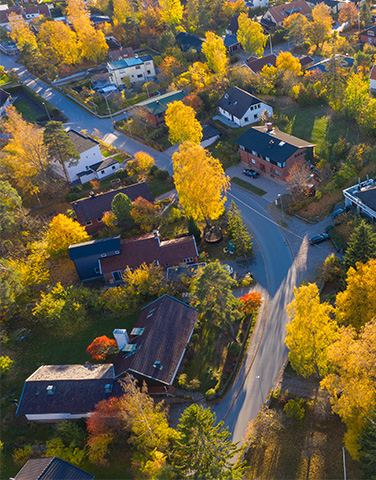
The window for the registration of high-rise residential buildings is open – are you ready?
The good news is that if you are struggling to keep abreast of building safety developments you are not alone!
The bad news is that guidance and legislation has continued to develop at pace since the Building Safety Act 2022 (BSA) received royal assent on 28 April 2022 and the problems with interpreting this lengthy, technical and complex piece of legislation means that the BSA continues to be a thorn in the side of all those operating in the UK’s built environment sector.
As its name suggests, the main aim of the BSA is to improve building safety and at the heart of this is a new safety regime for “higher-risk buildings” which is to be overseen by the Building Safety Regulator.
Part 4 of the BSA deals with the management of safety risks in relation to occupied higher-risk buildings. The Building Safety (Registration of Higher-Risk Buildings and Review of Decisions)(England) Regulations 2023 came into force on 6 April, and the Building Safety Regulator opened the registration process for all in scope buildings on 12 April. All relevant applications will need to be made by 1 October 2023 representing another major step in the UK’s building safety journey.
Owners of residential buildings and those with management responsibilities now need to:
- establish whether a building falls within scope;
- work out who is responsible for registering the building with the Building Safety Regulator;
- collate and prepare the information that is required to make the application; and
- ensure that the building is registered by 1 October 2023.
Which buildings need to be registered?
All “higher-risk buildings” need to be registered and these are defined in Part 4 of the BSA as buildings in England that:
- are at least 18 metres in height or have at least 7 storeys; and
- contain at least 2 residential units.
This means that for a building to be a higher-risk building it will meet either the height or storeys threshold – it does not need to meet both (although it may).
The Higher-Risk Buildings (Descriptions and Supplementary Provisions) Regulations 2023 set out the prescribed method for measuring height and counting storeys. By way of warning, as with many of the BSA measures the rules are complex and require careful consideration and so the process of ascertaining whether or not a building falls within scope is not as straightforward as it initially appears.
Buildings which are entirely used as hospitals, care homes, secure residential institutions, hotels, military premises and prisons do not need to be registered.
Who needs to register the building?
Accountable persons (APs) are responsible for identifying, assessing and managing the risks posed to people in buildings within scope from building safety risks (meaning structural failure or the spread of fire) in the parts of the building they are responsible for. To do this APs must, amongst other things:
- put measures in place to prevent building safety risks happening and reduce the severity of any incident that does happen;
- report certain fire and structural safety issues or incidents;
- engage with residents about the building’s safety;
- keep, update and provide information about the building;
- transfer building safety information to any incoming accountable person; and
- notify the Building Safety Regulator if there’s a change to an AP.
Importantly, it is the accountable person (AP) or (if there if more than one AP) the principal accountable person (PAP) who needs to register the building as a higher risk building with the Building Safety Regulator.
Ascertaining who the responsible person is, is not always a straightforward process as the legislation is complicated by various different definitions and exceptions. The starting point however is that an AP is an individual or organisation (such as a housing association, local authority or company) that owns or has a legal obligation to repair any common parts of the building (including the structure and exterior of the building, the corridors, lobbies and staircases). This may, for example, be the freeholder or estate owner, the landlord or a resident management company.
If there is just one AP for a building, then they will be the PAP. When there are multiple accountable persons, then whoever owns or has a legal obligation to repair the structure and exterior of the building is the principal accountable person.
One important thing to note is that if the PAP is an organisation, then someone within the organisation should be the single point of contact for the Building Safety Regulator. This individual should have authority or duties relating to the safety of the building, but this does not make them the PAP. It is the organisation itself which is the PAP.
Can the PAP authorise someone else to register?
PAPs can authorise someone else such as a managing agent or legal representative to register the building for them provided that this authorisation is in writing (email, letter or written contract). Authorising someone to act for you does not however make them the PAP and the ultimate accountability and liability remains with the PAP.
What is the deadline for registration?
The registration window closes on 1 October 2023 and all high-rise buildings that residents occupy or could occupy must be registered by 30 September 2023. It will be an offence to allow residents to occupy an unregistered building after this date.
How does the registration process work, what information needs to be provided and what does it cost?
The registration process itself is an online process and will require confirmation of the identity of the AP or APs and any PAP and the provision of basic details of the building including:
- the number of floors at or above ground level
- its height in metres
- the number of residential units
- the year it was originally built
- its address or addresses
In May of this year the Government issued much awaited guidance on the key building information that must be provided to the Building Safety Regulator in relation to a high-rise building. This includes information about potential risk factors including the building’s use, fire and smoke control equipment, the external wall system, the structural design of the building, energy supplies, the fire evacuation strategy and whether the property adjoins or attaches to another building.
A registration fee of £251 applies per building which is payable by credit or debit card as part of the registration process.
There is no minimum period for the regulator to register the building and it is estimated that there are over 12,000 existing high-rise buildings which will need to be registered by 1 October 2023. What we do not yet know is how the Building Safety Regulator is going to review the information that will be submitted and whether it has the capacity to process the applications it receives.
What happens if an in scope building is not registered by the deadline?
Failure by a PAP to register an occupied higher-risk building by 1 October 2023 could lead to an unlimited fine and/or imprisonment.
We are currently awaiting further regulations which we anticipate will set out more detail on enforcement and penalties but it is worth noting that the BSA provides that, where a corporate body commits a criminal offence under Part 4 of the BSA (which includes the registration regime for higher-risk buildings), any director, manager, secretary or other similar officer of that body is also deemed to have committed that offence in certain circumstances meaning that directors could face personal criminal liability for breaches of Part 4 duties.
Anything else to consider?
Whilst stakeholders across the real estate industry spend time getting to grips with the BSA it is important to remember that this is not the only weapon in the Government’s building safety armoury.
The Fire Safety (England) Regulations 2022 came into force on 23 January 2023. The purpose of these regulations is to impose ongoing obligations on the “responsible person” in relation to fire safety, in line with the duties outlined in the Building Safety Act. The extent of the obligations on the “responsible person” vary according to the height of the building. For further information please see The Fire Safety (England) Regulations 2022 – turning up the heat on England’s fire safety regime
Next steps
The roles of the AP and the PAP are a serious undertaking with the BSA giving the Building Safety Regulator robust enforcement powers.
Failure to register an occupied higher-risk building by 1 October 2023 could lead to a fine or imprisonment and it is therefore important that anyone responsible for the registration process takes action now to collate the information required and register any in scope buildings. It will also be extremely important for those in director or management roles to document the steps that are taken to ensure compliance with the BSA to show that reasonable practical steps were taken to avoid any breaches.
If you would like further information or assistance on this topic then please do get in touch.
Talk to us about
Related services
Related services
















